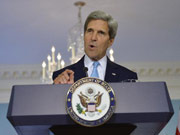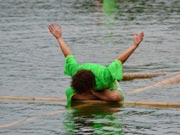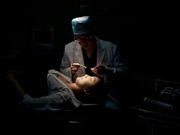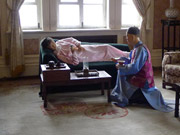Related:
>> 'Travel everywhere in Beijing': China Railway Museum
With its original name of 'Zhenjue Temple' (the name engraved at the entrance), Wuta Temple was first constructed during the Yongle years (1403 - 1424) of the Ming Dynasty (1368 - 1644). At that time, an Indian monk came to China to present Emperor Chengzu, the third emperor of the Ming Dynasty, five golden statues of Buddha and a draft of an Indian diamond throne pagoda style. The emperor built a temple for the monk. There are five pagodas in Zhenjue Temple, all with diamond throne style. Therefore, the temple is commonly called Wuta Temple.
Visitors can enjoy the unique architecture style in the temple, which combines characteristics of both Indian stupa and traditional Chinese architectures. In 1961, Zhenjue Temple was listed among China's first group of important cultural relics to be protected. After three times of renovations, the temple has regained its historical appearance.
There are religious carvings all over the Vajrasana (base and pagodas). The simple and beautiful vajrasana is the oldest existing "diamond seat" pattern in China.
Wuta Temple now is the place where the Beijing Stone Carvings Art Museum located; this themed museum specializes in collecting, preserving, researching and displaying stone carving artifacts in Beijing.
Address: No. 24, Wutasi, Baishiqiao Road, Haidian District, Beijing.
Recommended destinations nearby: Beijing Zoo, Beijing Planetarium, Beijing Ancient Animal Museum, Zizhuyuan Park
 |

 Kerry says U.S. to make own decision on attack on Syria
Kerry says U.S. to make own decision on attack on Syria China's weekly story (2013.8.24 - 8.30)
China's weekly story (2013.8.24 - 8.30) Highlights of MAKS 2013 Int'l Aviation and Space Show
Highlights of MAKS 2013 Int'l Aviation and Space Show  Stunt performance on floating bamboo stick
Stunt performance on floating bamboo stick Home prices keep rising in August
Home prices keep rising in August 18-meter-high Rubber Duck ready to meet Beijingers
18-meter-high Rubber Duck ready to meet Beijingers Reveal the South Korean beauty production line
Reveal the South Korean beauty production line Puppet Manchurian Palace Museum in China's Jilin
Puppet Manchurian Palace Museum in China's Jilin
Day|Week|Month